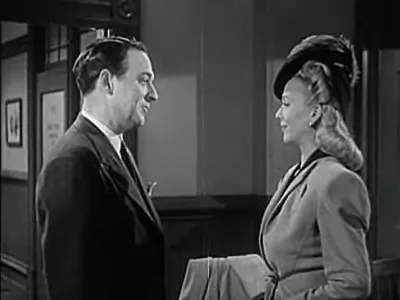This examination draws upon the archival presentation of Behind Green Lights and the work of director Otto Brower to reconsider a compact, astute film noir movie produced by Twentieth Century Fox in the immediate postwar period. The critic approaches the film as a product of its makers — Otto Brower (director), Robert Bassler (producer), and writers Charles G. Booth and Scott Darling — while following the action and dialogue visible in the archival transfer and summarized in contemporary records. Behind Green Lights is presented here as a deliberate exercise in genre economy: a film noir movie that compresses political pressure, journalistic ambition and procedural craft into a tight 94-minute runtime.
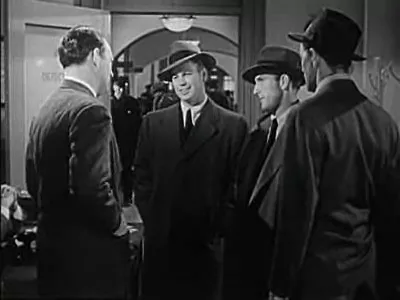
Outline
- Introduction and production context
- Detailed plot and narrative mechanics
- Principal characters and performances
- Visual style, cinematography and editing
- Sound, score and atmospheric detail
- Noir themes, motifs and moral ambiguity
- Politics, press and procedural elements
- Legacy and place among film noir movies
- Conclusion: why Behind Green Lights matters
Introduction and Production Context
Behind Green Lights arrived in February 1946 as a modest Twentieth Century Fox release, built around a pragmatic production team and a capable cast. The film's official credits list Otto Brower as director, Robert Bassler as producer, Joseph MacDonald as cinematographer, Stanley Rabjohn as editor and Emil Newman providing musical support. Carole Landis, William Gargan and Mary Anderson lead the cast. The film’s immediate postwar release date and studio backing situate it within the commercial studio system rather than the independent arena where many canonical film noir movie examples were produced, but that institutional origin does not prevent Behind Green Lights from embracing noir’s darker register.
As a film noir movie, it trades on urban nightscape, moral complication and institutional compromise. The production values and the studio system framing create a concise, functional vehicle for plot and character, and the result is a film that reads as much like a tough-minded police procedural as a mood-driven noir. That hybrid identity is part of its interest: Behind Green Lights is at once a studio crime drama and a film noir movie, and the two registers complement each other.
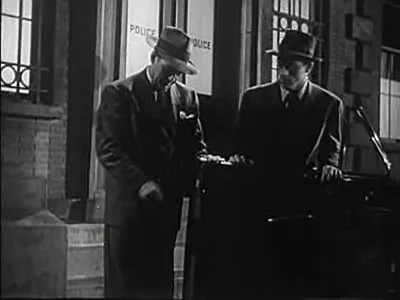
Plot and Narrative Mechanics
The narrative of Behind Green Lights is the film’s engine. It opens with a provocative tableau: a bullet-ridden corpse placed in a car, brazenly left in front of the police station. Lieutenant Sam Carson, played by William Gargan, becomes the center of a procedural drama that revolves around motive, press pressure and the foibles of human complicity. A young reporter, Johnny Williams, arrives on the police beat and provides the audience with an eager conduit into the working machinery of crime reporting and investigation. From this first image — the corpse, the abandoned vehicle, the station — the film constructs a tightly wound mystery.
Key plot beats are straightforward and deliberately staged. The dead man, Walter Bard, is a private detective and a purveyor of sensitive information — a classic plot device in a film noir movie. His appointment book contains a notation referencing Janet Bradley (Carole Landis), the daughter of a reform-minded mayoral candidate. This linkage supplies motive and political stakes. The press, embodied by Max Calvert (a newspaper owner), quickly senses an opportunity to weaponize the case against the Bradley family during an election. Calvert’s intervention is a narrative pressure on the police, testing Carson’s professional ethics and the integrity of law enforcement.
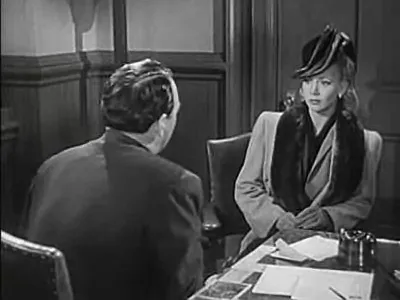
Complication ensues as multiple parties reveal partial truths. Janet Bradley confesses she met Bard to negotiate over blackmail material; she admits to taking an envelope and to borrowing money to buy it, yet insists she did not kill Bard. Meanwhile, Dr. Yeager, the corrupt medical examiner, privately informs Calvert that Bard died of poison before the bullet was fired. Calvert instructs Yeager to remove Bard’s body from the police station and replace it with a John Doe to conceal the poisoning — a cover-up that heightens the film’s moral murk.
From that moment, sequence and counter-sequence of deception unfold. A bumbling but resourceful prisoner performs a switch and the wrong body is taken to the crematorium; Johnny Williams discovers Bard’s body hidden in the press room wardrobe, producing the scoop and returning the case to the attention of the precinct. The discovery allows the lieutenant to order a second autopsy and prompts revelations: Nora Bard, the estranged wife, and Arthur Templeton admit to misleading the police about their whereabouts and staging a fake suicide to shield one another. The film’s climax turns on the arrest of Dr. Yeager, whose motive is exposed: Bard had been investigating a malpractice case involving Yeager, and Yeager poisoned Bard to conceal exposure.
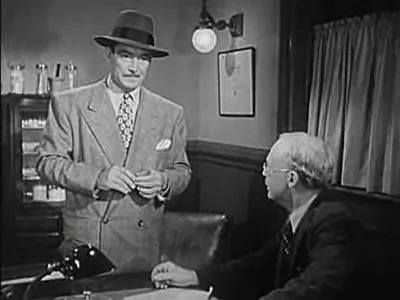
The narrative is economical, and its mechanics are emblematic of a film noir movie that foregrounds systems — police, press, hospitals — as interlocking arenas where ethics are negotiated. The procedural rhythm is brisk, and the plot avoids ornamental digressions. The result is a tightly plotted crime story that also functions as a commentary on institutional frailty.
Plot Moments Worth Detailing
- The opening tableau at the police station that immediately establishes danger and public exposure.
- The discovery of Janet Bradley’s name in Bard’s appointment book, raising political stakes.
- Max Calvert's manipulation of news and pressure on the police to capitalize on the scandal.
- The corrupt coroner’s attempt to substitute bodies, which escalates the cover-up.
- Johnny Williams’ discovery of the hidden corpse, returning agency to honest reporting.
- The final unmasking of Dr. Yeager and his motive: fear of exposure from Bard’s investigation.
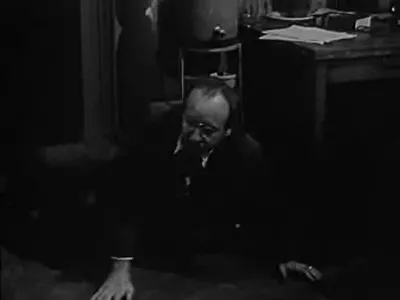
Principal Characters and Performances
Behind Green Lights is structured around a modest ensemble, each player serving a functional dramatic role within a film noir movie. The performances are purposeful rather than ornamental, and the actors deliver a combination of genre-appropriate grit and studio polish.
William Gargan as Lieutenant Sam Carson
Gargan’s Sam Carson is the moral axis of the film. He is neither saint nor cynic; he is a policeman bound to procedure and to a pragmatic sense of justice. When pressed by Calvert to book Janet Bradley to influence an election, Carson resists the pressure, signaling the film’s investment in a professional ethic. Gargan delivers an authoritative but human performance that anchors the procedural logic and resists melodrama. For a film noir movie, his presence keeps the narrative focused on investigation rather than victimized nihilism.
Carole Landis as Janet Bradley
Janet Bradley is cast as the vulnerable and enigmatic figure central to the narrative ambiguity. Landis portrays her with a restless mix of shame and desperation. The scene where her fingerprints are found on the gun and a glass in Bard’s apartment demonstrates the film’s use of forensic detail to generate plot tension — and Landis provides the sort of fragile dignity that invites suspicion and sympathy in equal measure. Within the film noir movie structure, she occupies the role of a woman caught between public scandal and private fear.
Mary Anderson as Nora Bard, Don Beddoe as Dr. Yeager
Mary Anderson’s Nora Bard and Don Beddoe’s Dr. Yeager represent larger thematic poles. Nora’s entanglement with Bard embodies marital collapse and the complexity of loyalty, while Yeager is a figure of institutional corruption: the medical examiner who betrays professional responsibility. Yeager’s arc from official authority to murderer fits naturally into film noir movie conventions: the trusted expert revealed as the true villain.
Supporting Ensemble
Richard Crane (Johnny Williams), Roy Roberts (Max Calvert), John Ireland (Oppenheimer) and others populate the precinct and newsroom with textured, businesslike performances. The reporters and station staff create a world where information is currency; their behavior and banter drive the plot’s momentum. These players make the film's small universe feel lived-in — a necessity for any credible film noir movie.
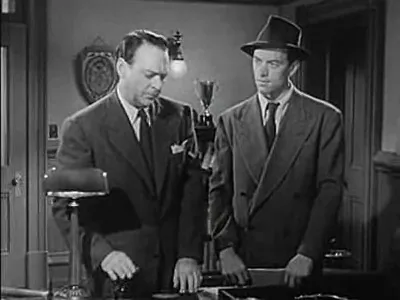
Visual Style, Cinematography and Editing
Joseph MacDonald’s cinematography and Stanley Rabjohn’s editing create an economy of shading and pace appropriate to a film noir movie. The film’s visual grammar relies on careful framing, punctuated light, and quick cutting when the plot demands it. There is no excess of visual trickery; rather, the camera places characters in environments — precinct rooms, apartments, pressrooms — and lets their decisions register.
Key visual motifs germane to a film noir movie include the contrast between public spaces (the station, the pressroom) and private, compromised locations (Bard’s apartment, the morgue). The film repeatedly frames bodies — not just the corpse but the body as evidence, the body as political symbol — in tight compositions. The shot of Bard’s car left at the police station is an emblematic image: it stages violence as a public spectacle, a recurring theme in noir narratives.
Editing rhythm is brisk. Rabjohn maintains momentum by compressing interrogations and revelations into tightly staged sequences. The sequence involving the substitution of bodies at the morgue and the subsequent confusion at the Woodberry crematorium is edited to create rising bewilderment and to move the audience through a chain of misdirections — a technique well-suited to a film noir movie’s puzzle-like structure.
Sound, Score and Atmospheric Detail
Emil Newman’s musical contribution is functional and supportive: the score underscores tension and punctuates emotional beats without calling undue attention to itself. For a film noir movie, emphasis is typically placed on ambient and diegetic sound — footsteps in stairwells, rain on pavement, the murmur of newsroom traffic — and Behind Green Lights uses such sound design to create a city environment rife with small intimations of danger.
Dialogue in this film is often sharp and purposeful, functioning as a metronome for narrative progress. From snappy newsroom exchanges to sober police interrogations, the script by Charles G. Booth and Scott Darling aims for clarity. The use of forensic detail — fingerprints, lipstick shades, autopsy findings — is not only plot-driven but also contributes to a textured sense of realism. In a film noir movie, such realistic detail provides ballast to the melodramatic elements.
Noir Themes, Motifs and Moral Ambiguity
Behind Green Lights belongs to that subset of noir-adjacent films that emphasize institutional failure and the contamination of civic structures. Unlike noir that centers on existential despair or private obsessive impulses, this film frames its darkness through public systems: police, press, the medical establishment, and electioneering. That orientation yields a different but equally potent moral landscape.
The following themes stand out and align the film with the broader tradition of a film noir movie:
- Corruption within institutions: Dr. Yeager’s betrayal and Max Calvert’s manipulative press strategies foreground how public institutions can serve private agendas.
- Compromised ethics in the name of expediency: Calvert pressures the police to book Janet Bradley to influence an election; Yeager attempts to conceal a poisoning to protect reputations.
- The ambiguous status of truth: The film repeatedly shows how partial truths and staged performances can obscure the factual center of a case, forcing the detective to navigate a half-lit world.
- Gendered vulnerability and moral agency: Janet Bradley and Nora Bard are both subject to public scrutiny and private danger; the film interrogates how women become pawns in male-driven institutions.
These elements align Behind Green Lights with the concerns of a film noir movie while also aligning it with the procedural film: it is less concerned with metaphysical angst and more with how the machinery of the city handles crisis and scandal.
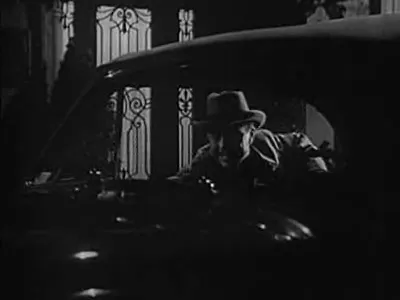
Politics, the Press and the Procedural
A significant reason Behind Green Lights is interesting to the critic is its focus on the nexus of press and politics. Max Calvert, as newspaper owner and opportunist, is a figure who weaponizes information. His desire to use Janet Bradley’s alleged involvement to influence a mayoral election dramatizes a mid-century anxiety: the ease with which media can alter civic outcomes. That motif is essential for a film noir movie that places the public sphere under the spotlight.
Johnny Williams’ role as the rookie reporter who finds the body hidden in the press wardrobe is an important corrective. His discovery restores the link between honest reporting and public knowledge. The film stages journalism as both complicit in scandal and as a potential force for uncovering truth — an ambivalence that mirrors the film noir movie’s interest in morally compromised institutions and the possibility of individual integrity within them.
The procedural dimension is equally prominent. Lieutenant Carson’s refusal to be guided by political pressure, and his insistence upon following forensic leads, demonstrates a faith in method. Carson’s ultimate solution — ordering another autopsy and pressing for accountability rather than succumbing to expediency — represents the film’s ethical claim: systems can be corrected if professionals remain committed to evidence and procedure. That institutional faith is an unusual but compelling feature for a film noir movie, which often wallows in institutional failure rather than proposing procedural remedy.
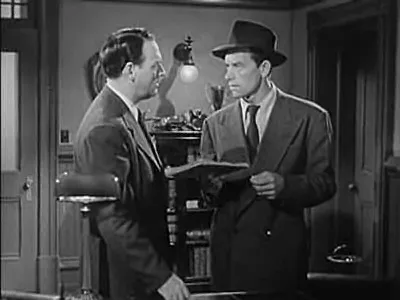
Scriptcraft and Key Dialogues
The script by Charles G. Booth and Scott Darling balances exposition and character. Booth and Darling use specific props (appointment books, fingerprints, lipstick shades, cigarette butts) to create a tangible trail of evidence that guides the viewer. The dialogue is direct and economical, with memorable exchanges that reveal character intent and theme without verbose commentary.
“There's nothing like a public corpse to sharpen the pencil of a politician,”
This line — illustrative rather than literal — encapsulates how the script positions public spectacle as a lever of political energy. The film uses such lines to highlight motives and to mark shifts in power dynamics.
Another recurring script device is the tension between rumor and verification. Characters often speak in partial knowledge, and the script orchestrates how pieces fit together. The result is a form of procedural storytelling that resembles a film noir movie but is structured as a chain of professional decisions rather than as an exploration of interior corruption alone.
Legacy and Place among Film Noir Movies
Behind Green Lights does not often appear at the center of popular lists of essential film noir movies, but it deserves attention for how it integrates press-politics intrigues and procedural fidelity into the noir idiom. As a studio picture with a runtime of 94 minutes, it is lean and purposeful. Its value lies in its blend of moral inquiry and investigative craft.
The film’s lineage is visible: it shares concerns with other mid-1940s films that worry at institutional integrity and the corrosive power of rumor. Yet its pragmatic conclusion — that an ethical policeman and diligent reporters can restore the truth — gives it a tonal difference from more fatalistic entries in the film noir movie canon. Thus, the film functions as an instructive counterpoint: it is a noir-adjacent picture that insists on resolution and professional responsibility.
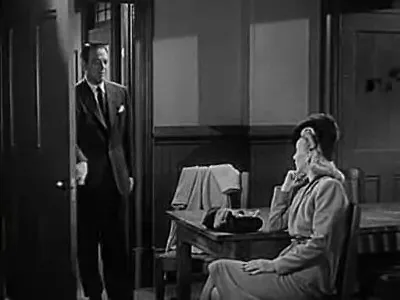
Why the Film Matters to Contemporary Viewers
- It serves as a document of postwar institutional anxieties conveyed through crime drama.
- It exemplifies how a film noir movie can be used as a vehicle for procedural exposition rather than pure mood style.
- It offers a compact study in ensemble performance, demonstrating how character actors support a plot-driven narrative.
- It reveals the ways press influence and political calculation can distort criminal investigation — a theme still resonant today.
Critical Observations and Limitations
The critic notes that Behind Green Lights is not a stylistic tour de force in the manner of the most celebrated film noir movies. Its visual approach is restrained, its characters occasionally schematic, and its political framing occasionally didactic. But those limitations are also strengths: the film’s functional clarity allows it to probe ethical quandaries without getting lost in stylistic excess. The core narrative — an investigation complicated by cover-ups and power plays — is well-executed and satisfying within genre expectations.
Moreover, the film’s reliance on forensic details and procedural logic may feel dated to viewers accustomed to modern forensic dramas, yet the film’s emphasis on human choices — the decision by a medical examiner to conceal evidence, a reporter’s moral choice, a cop’s refusal to yield to political pressure — gives it moral urgency.
Comparative Notes: How Behind Green Lights Sits Next to Other Film Noir Movies
Compared to more celebrated film noir movies that emphasize psychological disintegration or stylistic chiaroscuro, Behind Green Lights is resolutely communal: it focuses on groups (the pressroom, the police, the morgue) rather than on tormented loners. Its noir characteristics — the crime, the moral ambiguity, the corrupt official — are present, but the film leans toward restoration of order through evidence-based policing. In that regard, it resembles a subset of film noir movies that were less interested in fatalism than in exposing how ordinary professional practices might counteract corruption.
Where other film noir movies indulge in romanticized corruption and cynical endings, Behind Green Lights offers a more procedural optimism. That distinction increases its value as an historical document: it reveals how the noir sensibility could be harnessed to critique powerful institutions while still affirming the possibility of institutional repair.
Production Notes Based on Studio Credits
The film’s production credits are worth stating clearly for the reader. Otto Brower directs with an economy that emphasizes plot clarity. Robert Bassler is listed as producer; Joseph MacDonald supervises cinematography; Stanley Rabjohn edits; Emil Newman supplies music — all studio craftsmen whose work supports the film’s goal of efficiency. The principal cast includes Carole Landis (Janet Bradley), William Gargan (Lt. Sam Carson) and Mary Anderson (Nora Bard). These talents collaborate to realize a compact narrative that functions as a film noir movie while complying with studio-era constraints.
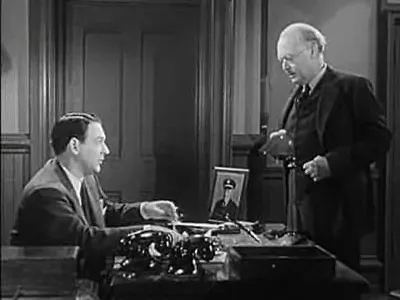
Final Act and Resolution
The film resolves with an unraveling of the cover-up. Yeager, the corrupt examiner, is exposed as the killer when circumstantial and forensic evidence align with motive: he feared exposure for malpractice after Bard’s investigation. Yeager attempts flight but is apprehended, and Lieutenant Carson’s steadfastness protects Janet Bradley from being misused as a political pawn. Johnny Williams’s scoop restores the primacy of honest reporting, and the final equilibrium restores institutional faith while recognizing the damage done by power and ambition. As a film noir movie, Behind Green Lights thus closes on the recognition that darkness is always near but that, sometimes, procedure and integrity can reassert themselves.
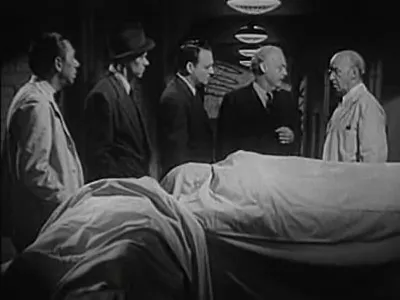
Conclusion: Why Behind Green Lights Deserves Reappraisal
Behind Green Lights is a worthwhile subject for reconsideration among students of classic cinema and genre. It demonstrates how a film noir movie can be designed as a compact procedural that also interrogates institutional ethics. The film’s strengths — brisk plotting, serviceable performances, a clear moral center embodied by Lieutenant Carson, and a willingness to confront press and political manipulation — make it a compelling case study in how noir themes can be adapted to studio storytelling.
While the film will not supplant canonical masterpieces of the genre, its blend of investigation and social critique yields lasting interest. That it was produced by Twentieth Century Fox and released on February 15, 1946 situates it within the mainstream studio output, and yet it retains enough of the noir temperament to be included in thoughtful surveys of the period's criminal dramas. For the cinephile or the student of film noir movies, Behind Green Lights offers a concise, instructive experience: it is at once a puzzle and a civic drama.
In short, Behind Green Lights is an example of how film noir movie conventions can be harnessed to tell a story about responsibility, truth and the institutions charged with protecting both. Its modest scale is a virtue: the film is focused, serviceable, and morally engaged — a film noir movie that rewards careful viewing.
